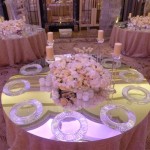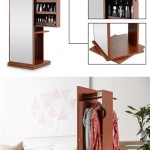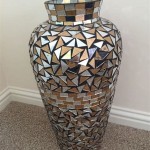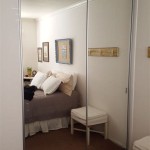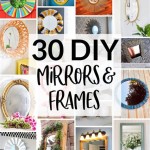How Do You Make a Two-Way Mirror at Home?
Creating a two-way mirror at home involves applying a specialized window film to a piece of glass or acrylic. This film, often referred to as mirror film or one-way mirror film, partially reflects and partially transmits light, creating the desired effect. The key to the illusion lies in the difference in lighting levels between the two sides. The observation side must be significantly brighter than the mirrored side. This allows the observer to see the reflection, while those on the mirrored side see only their own reflection due to the brighter light on the observation side overpowering the light transmitted from the darker side.
Essential Materials for Creating a Two-Way Mirror
Acquiring the right materials is crucial for a successful outcome. The primary component is one-way mirror film. This specialized film is available online and at some specialty glass and window film retailers. Ensure that the chosen film is specifically designed for creating a two-way mirror effect. Other types of window film may provide privacy or reduce glare but won't create the desired reflective properties.
Beyond the film, a clean piece of glass or acrylic is needed. The size of the glass will depend on the intended application. It's essential to choose a glass surface that is free from scratches or imperfections, as these will be magnified by the film. Cleaning supplies, including a glass cleaner and lint-free cloths, are also necessary for preparing the glass surface. A squeegee or similar tool can help to smooth out the film and eliminate air bubbles during application.
Finally, a sharp utility knife or razor blade, a spray bottle filled with a mixture of water and a few drops of dish soap, and a measuring tape or ruler are necessary for cutting and applying the film precisely.
Step-by-Step Application of One-Way Mirror Film
The application process requires precision and patience. Begin by thoroughly cleaning the glass surface. Any dust, dirt, or fingerprints can interfere with the adhesion of the film. Spray the glass generously with the soapy water solution. This will help to prevent the film from sticking immediately, allowing for adjustments during positioning.
Next, carefully peel the backing off the one-way mirror film. This can be a delicate process, and it's helpful to have an extra set of hands. As the backing is removed, spray the adhesive side of the film with the soapy water solution. This will prevent it from sticking prematurely and allow for repositioning.
Position the film on the wet glass surface. Align the film carefully, leaving a small margin around the edges. Use a squeegee or similar tool to smooth out the film, working from the center outwards. This will push out any trapped air bubbles and ensure a flat, even application.
Once the film is smoothly applied, trim any excess film around the edges using the utility knife or razor blade. Ensure a clean, precise cut for a professional finish. Finally, allow the film to dry completely. The drying time may vary depending on the type of film and ambient conditions.
Achieving the Two-Way Mirror Effect: Lighting Considerations
The success of a two-way mirror relies heavily on the lighting conditions. The observation side, the side from which viewing takes place, must be significantly brighter than the mirrored side. This lighting differential is crucial for the effect to work. The brighter light on the observation side causes the majority of the light to reflect back, creating the mirror effect.
Conversely, the mirrored side should be relatively dim. This reduced light level prevents significant light transmission from the mirrored side to the observation side. Individuals on the mirrored side see primarily their own reflection, while observers on the brighter side see through the mirrored surface.
Managing light levels can be achieved through various methods. Dimming lights on the mirrored side and increasing illumination on the observation side is a common approach. Window coverings can also be used to control ambient light. It is important to experiment with different lighting configurations to achieve the optimal two-way mirror effect.
Considerations for lighting extend beyond brightness. The color temperature of the light can also impact the effect. Consistent color temperatures on both sides are recommended for optimal viewing conditions. Avoid dramatic differences in color temperature, as this can interfere with the illusion.

Magic Mirror Part 1 Smart Proof Of Concept Kathy May Silas

How A Two Way Mirror Works

How To Tell If A Mirror Is Two Way Or Not 8 Steps With Pictures

How To Detect A Two Way Mirror Fingernail Test

How To Tell If A Mirror Is Two Way Or Not 8 Steps With Pictures

How To Tell If A Mirror Is Two Way Or Not 8 Steps With Pictures

How To Tell If A Mirror Is Two Way Or Not 8 Steps With Pictures

How To Make A Mirror Tv Step By Instructions Home Library Rooms Two Way

How To Tell If A Mirror Is Two Way Or Not 8 Steps With Pictures

How To Tell If A Mirror Is Two Way Or Not 8 Steps With Pictures

